Who Is Judging Whom?
How many times have you entered the arena to compete and found yourself obsessing about what someone else was thinking about you? Sure we worry about what the judges think, but we also worry about what almost everyone else thinks. We worry about the judgments of our trainers, other people’s trainers, family, friends, peers, as well as other competitors. Yet, at the end of the day, we have to wonder how many of those people, whose judgments we worry so much about, gave our performance more than a passing thought. The reality is that we are most often the only ones that are judging ourselves so harshly and ruthlessly.
In the world of equestrian competition, the people who are in the position to judge competitors have experience and training. The higher the level of competition, the higher the level of training and experience. Part of the reason for training judges is to assure that competitors are assessed fairly according to some agreed upon criterion. So here is my question. How much time have you dedicated to training your internal judge? Do you judge yourself fairly according to accepted and reasonable criteria that match your level of skill and experience, or do you judge yourself capriciously and harshly according to ever shifting criteria?
So many of the equestrian athletes I work with who suffer from performance or competition anxiety have an issue with their internal critic or judge. They might say they are worried about what others think, but at the end of the day they suffer most because of what they think of themselves. One of the most effective interventions for performance anxiety is to help athletes focus on judging themselves and their performance by their own internal measuring stick. However, this requires that our internal measuring stick is constructed carefully and fairly. In other words, we need to be sure that our internal judge is adequately trained and experienced so that we judge ourselves fairly and consistently according to reasonable and established criteria that are suitable to our level of skill and experience.
The next time you catch yourself being harshly self-critical try this exercise. Write down the criticisms that you are making of yourself. For each criticism, write down the specific criteria you are using to make that judgment. Ask yourself if the criteria you are using are objective and valid for competitors of your level of skill and experience in your discipline. If the answer is “yes”, set one or more specific goals to work toward before your next competition. If the answer is “no”, identify one or more reasonable, objective and valid criteria upon which competitors of your skill and experience could be fairly judged and set one or more specific goals which you can work toward before you next competition.
We can’t always control what others do to prepare themselves for the role and responsibility of being a judge. However, we can control our own training and in this way prepare ourselves to fairly and competently judge ourselves.
But, How Do I Change That?
One of my favorite weeks of the year is the time I spend at the Upperville Colt and Horse Show. This year was no exception. My tent sat near the entrance gate to Ring 2 and the Ring 2 warm-up ring. Between sessions I had the pleasure of watching riders warm-up and then watching their rounds in the Hunter Ring. As a sport psychologist, it is a luxury to work with clients and then spent the time between sessions pondering the challenges that my clients face while observing athletes in action.
As often happens in my work, a distinct theme has emerged in my work at the show this year. As my clients explored their concerns there have been several “light bulb” moments where they have become aware of what they do to sabotage their performance. Once they realize what is happening, they often ask the question, “How do I change that?”
Before offering some thoughts about the process and nature of change, I need to highlight the most important part. Before we seek to change we need to be aware (a) that there is a problem, (b) develop at least some small insight into the ways in which we get in our own way, and (c) discover our unequivocal desire to change. Without this kind of awareness we run into two different problems. The first is motivation. When we are blind to a problem, or in denial, we seldom feel any motivation to make a change. Secondly, when we know we have a problem but have no insight (or interest) in how we contribute to creating the problem we will be at high risk for blaming others. This might include blaming our horse, our trainers, judges, etc. Finally, we have to really want to change. Nothing will stymie attempts to change faster than reservations about changing. Reservations might include fear of failure, fear of success, fear of unintended consequences, or some other type of fear or ambivalence about change.
Once we have basic awareness of the problem, a guess at how we contribute to it, and a clear unequivocal desire to change; the process of change becomes simple (if not easy). The core of creating change is to know what we want to do to replace the behavior that is connected to the problem. It is incredibly easy to fall into the “I don’t want to do that” mode. Knowing what we don’t want to do is only important in helping us to identify what we want to change. After that, focusing on what we don’t want only serves to intensify or practice what we don’t want. Decide what you want to do instead and challenge yourself to do it.
Next, be specific. Focus the change you want to make on a specific behavior in a very specific context. Specificity leads to personal accountability and the ability to assess the impact of our changes. The more global and vague our ideas of what we are going to change, the more difficult it is to pin ourselves down and hold ourselves accountable for actually changing. We have to actually do something different. Furthermore, if we aren’t specific we never get to learn much about what actually makes a difference.
Finally, the changes we want to make need to be things that we can actually control. Changes have to be self-initiated and maintained. We have no power to change others and often very little ability to change contexts. We can’t make a horse show judge change or make our horses change. Change starts with us and is maintained by us. This is true whenever we want a relationship to change.
The next time you want to make a change try this strategy out:
– Describe the problem you are experiencing.
– Decide if REALLY want to change it.
– Identify one or more ways your behavior contributes to the problem.
– Be very specific about the behavior that contributes to the problem and specific about the context in which the problem occurs.
– Decide what your going to do differently.
– Make sure what you decide to do can be self-initiated and self-maintained.
– Observe the results. Is it what you want? If not, lather rinse repeat.

